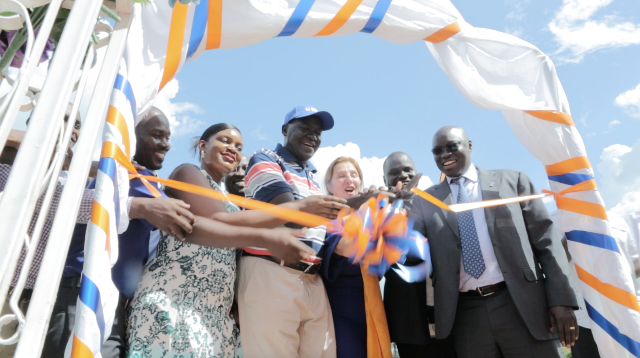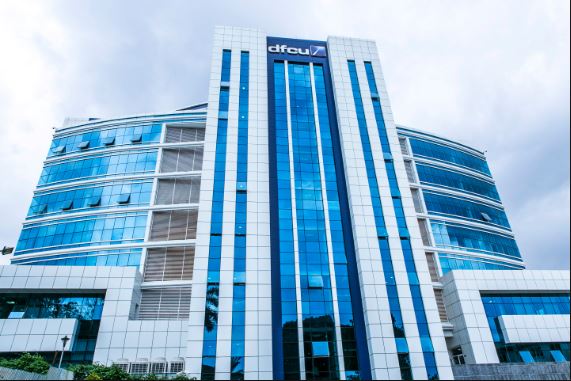Dfcu recently released its 2017 audited accounts, which included interesting new wording and mandatory disclosures introduced into Uganda’s financial reporting landscape.
To a normal consumer of financial reporting information, the terms and their interpretation are used to enable better understanding of the events at dfcu after the acquisition of Crane Bank.
International Financial Reporting Standard 3 (IFRS 3) guides the accounting for Business Combinations. The standard provides for the acquisition method, which requires assets acquired and liabilities to be measured at their fair values as at the date on which the acquiring entity obtains control of the acquiree. Only identifiable assets and liabilities are recognised.
The acquirer classifies the assets and liabilities on the basis of the contractual terms, economic activities, operating and accounting policies and such pertinent conditions that may exist on the date of acquisition.
According to the 2017 results published last week, dfcu posted a consolidated Profit After Tax of Shs106b. A close scrutiny of the accounts reveals some new terminologies which need to be dissected if we are to fully understand the company’s financial performance in 2017.
The company also issued an Investors’ note, which provides additional information on some of the key drivers of value in the balance sheet.
The fair valuation of the identified assets and liabilities taken over by dfcu yielded a net value of Shs268b. The fair valuation exercise was undertaken by Ernst & Young, a professional accounting firm, and verified by KPMG during their independent review exercise carried out annually.
This estimate provides a better understanding of the value of the business assets acquired by Dfcu and it guided the Shs200b purchase price agreed between Dfcu and Bank Of Uganda. In addition to the Shs200b cash settlement payable over three years, dfcu assumed liabilities of Shs897b comprising customer deposits of Shs675b, Shs180b in loans from lenders and other obligations of Shs40b.
Based on the fair valuation exercise, the deferred purchase obligation was valued at Shs148b, which is the carrying amount on the date of acquisition. However, the actual cash payout due to Bank of Uganda is Shs200b hence the top up of the fair valuation has to happen as payment falls due and hits the profit and loss during the accounting period. dfcu has already paid Shs60b to BoU and the balance is secured by Government Securities pledged to Bank Of Uganda.
The other interesting number worth discussing is the Net Loans and Advances of Shs771b comprising Shs526b in performing loans acquired under the transaction and other financial assets of Shs245b representing the value of the bad debts, which are off the Dfcu balance sheet. The other financial assets refers to the fair value of the future benefits from the off balance bad debts should Dfcu be able to collect them. Noteworthy, however, is that Crane Bank was closed in part for failing to collect these bad debts. According to IFRS 3, dfcu will have to apply the proceeds realised from the recoveries of the bad debt to amortise the Shs245b asset over the next five years.
The auditors will test this asset annually for impairment to assure investors that the best efforts are being made to maximise collection. Investors will have to keenly watch dfcu’s performance on this account over the coming years as such assets while assets result in a direct contribution to bank profitability, they can suffer further impairment over time, preventing full collection.
The fair valuation included an intangible asset of Shs35b. This relates to the anticipated benefits from the new customer relationships resulting from the takeover. Again, this also has to be amortised (written down) to zero over the coming five years and is subject to an annual impairment test by the auditors.
In effect, the overall purchase bargain of Shs119b reflected in the accounts, is the composite of all the items listed above, which if adjusted for Shs87b, composed of intangible asset/customer relation of Shs35b and deferred obligation top up of Shs52b, which must be amortised, the real purchase bargain was approximately Shs30b only.
Based on the facts that dfcu took a big risk to venture into the Crane Bank transaction given the Corporate Governance standards at Crane and the revelations of the PWC forensic audit, the Shs200b was fair price for such an entity and dfcu has the burden of proving to its shareholders that it did not over pay for this acquisition.
Some eyebrows and accusations have been raised against BoU for allowing a deferred consideration of Shs200b and yet dfcu had the cash to pay immediately using the capital injection, which was a pre-requisite for the transaction. It was more valuable for BoU to stabilise the banking sector than to be paid the full Shs200b in a single cheque.
It was also important that the acquirer maintains ample liquid funds as it effected the acquisition across the country. Dfcu had sufficient liquidity as it took on close to Shs900b in customer and loan obligations that had to be honoured on demand. The enhanced capital base and strong liquidity position created market confidence and medium-term stability sought by the Central Bank.
In summary, mergers and acquisitions often result in a number of social benefits. And in the case of dfcu, the shareholders expect the bank to leverage the strong capital base, larger balance sheet, and wider branch network to realise economies of scale so as to reduce the cost to income ratio while delivering an acceptable and improving Return On Equity (ROE). Time is ticking and dfcu has to ‘Walk the talk’ as there is no point of return.
Story via: http://mobile.monitor.co.ug




